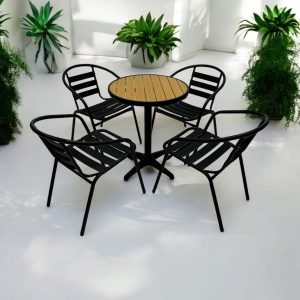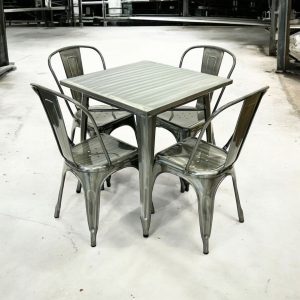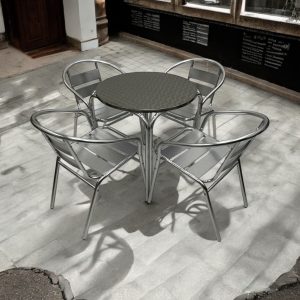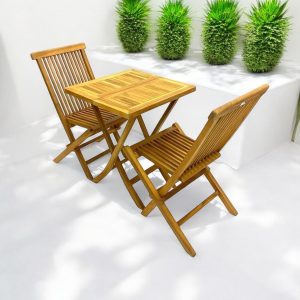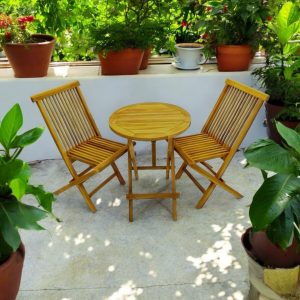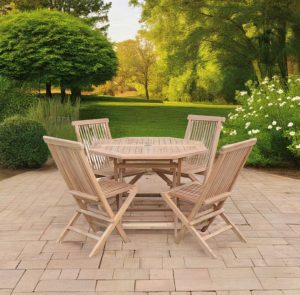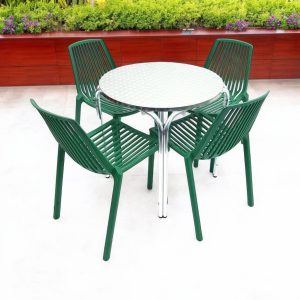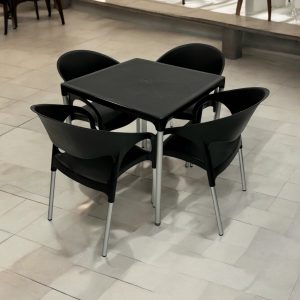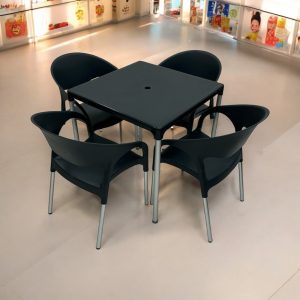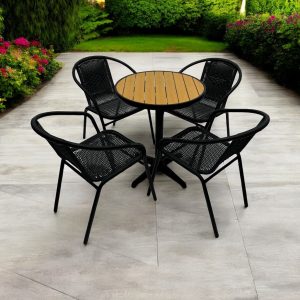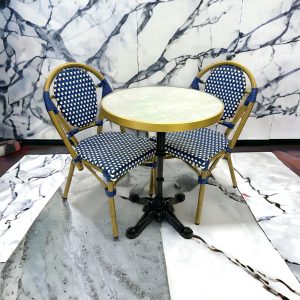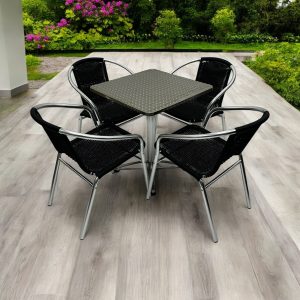Outdoor furniture enhances any business’s overall appeal and functionality with outdoor space. Whether it’s a bustling café, a serene hotel garden, or a lively pub patio, the right outdoor furniture invites customers to relax and enjoy their surroundings, making them more likely to spend time—and money—at your establishment.
In the warmer months, outdoor areas become prime real estate for businesses. Properly chosen furniture not only maximises the utility of these spaces but also elevates the customer experience. Comfortable, stylish, and durable outdoor furniture can transform an ordinary outdoor area into a welcoming oasis, encouraging patrons to linger longer and return more often.
By investing in high-quality outdoor furniture, businesses can create inviting environments that attract customers, increase seating capacity, and boost revenue. Whether providing a cosy spot for a morning coffee or a comfortable seating area for evening drinks, the right outdoor furniture is crucial in making the most of your business’s outdoor space.
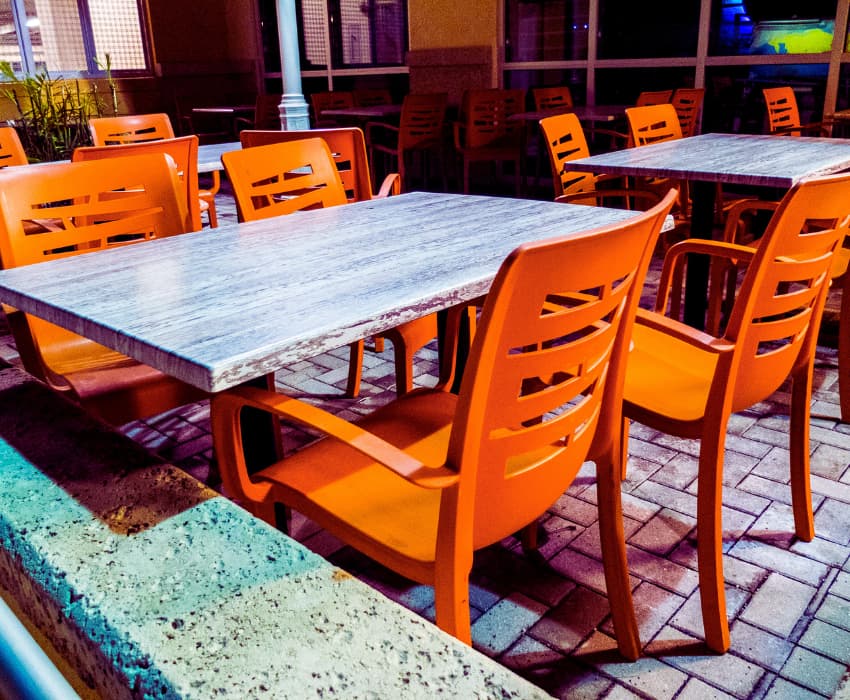
Commercial Outdoor Furniture
Commercial outdoor furniture is designed and built for business settings such as restaurants, cafes, hotels, and pubs. Unlike domestic outdoor furniture, which is intended for light, occasional use, commercial outdoor furniture is crafted to withstand frequent, heavy use by many people. This distinction is crucial as businesses need furniture that is both durable and capable of maintaining its appearance and functionality over time.
The materials used in commercial outdoor furniture are chosen for their durability and resistance to the elements. Wood, plastic, metal, and rattan are the most common materials. Wood offers a classic, natural look and can be treated to resist weather and wear. Plastic is lightweight, versatile, and often available in various colours, making it a popular choice for multiple settings. Metal, particularly aluminium and stainless steel, is valued for its strength and resistance to rust. At the same time, with its flexible and durable nature, rattan provides a comfortable and stylish option that can mimic the look of natural wicker.
Legal and safety requirements are also a critical consideration for commercial outdoor furniture. Businesses must adhere to regulations that ensure the safety and well-being of their customers. This includes meeting fire safety standards stricter for commercial environments than domestic ones. The furniture must also be stable and capable of withstanding the wear and tear of constant use, ensuring it remains safe and functional for all patrons.
Quality Commercial Outdoor Furniture
Investing in quality commercial outdoor furniture offers numerous advantages for businesses. One of the primary benefits is durability and longevity. High-quality furniture is constructed from materials that withstand constant use and environmental exposure. Whether it’s the relentless sun, heavy rain, or frequent cleaning, durable furniture retains its structural integrity and appearance over time. This reduces the need for frequent replacements, ultimately saving businesses money and ensuring that outdoor spaces always look inviting and well-maintained.
Other benefits include enhanced customer satisfaction and comfort. Comfortable seating and functional tables create a welcoming environment where customers can relax and enjoy their experience. When customers feel comfortable, they are more likely to stay longer, order more, and return in the future. This positive customer experience can increase loyalty and word-of-mouth recommendations, driving more traffic to the business.
We have all done this, sitting down for a coffee, whether on holiday or a Sunday shopping stroll and the minute you sit down, you say (or think) this is nice.
Well-chosen furniture enhances the visual appeal of outdoor spaces, creating a cohesive and attractive look that reflects the brand’s identity. Stylish, high-quality furniture can set a business apart from competitors, making it a memorable destination. Moreover, a well-designed outdoor area can be used in marketing materials to showcase the ambience and appeal of the business, attracting new customers and reinforcing the brand’s image.
Mistakes in Outdoor Furniture Selection
One of the most frequent mistakes is choosing furniture based solely on price. While budget considerations are essential, opting for cheaper options often means selecting pieces intended for domestic use. These are not designed to withstand the heavy, frequent use typical in commercial settings and can quickly deteriorate, leading to additional costs for repairs or replacements.
Another standard error is neglecting weather-resistant features. Outdoor furniture in a business setting must endure various weather conditions, from intense sun to heavy rain. Furniture lacking weather-resistant properties will deteriorate faster, losing functionality and aesthetic appeal. Investing in materials specifically designed to withstand the elements, such as treated wood, metal, or high-quality plastic, is crucial for longevity.
Overlooking comfort and practicality can also be detrimental. While style is important, the primary function of furniture is to provide comfort. Uncomfortable seating or impractical designs can detract from the customer experience, making patrons less likely to return. It’s essential to prioritise comfort, usability, and aesthetics to create a welcoming environment.
Another significant oversight is the failure to consider maintenance requirements. Different materials and designs have varying maintenance needs. Some may require regular cleaning, staining, or other upkeep to remain in good condition. Businesses must realistically assess their capacity for maintenance to ensure their outdoor furniture remains attractive and functional without imposing undue burdens.
Lastly, ignoring the scale and size of the outdoor area can lead to a cluttered or sparse environment. Too large furniture can overwhelm a space, making it feel cramped and uncomfortable. Conversely, furniture that is too small can make an area look empty and underutilised, and worse, it can create a poor experience for the customer trying to get a coffee and a piece of cake onto a small table. Correctly measuring the outdoor space and choosing appropriate furniture is vital for creating a balanced and inviting setting.
Factors to Consider When Selecting Outdoor Furniture
Selecting the right outdoor furniture involves several key factors that ensure the furniture meets the business’s needs and enhances the outdoor space.
-
Material Matters
The choice of material is crucial for outdoor furniture as it directly impacts durability, maintenance, and aesthetic appeal. Rattan is popular for its flexibility and natural look but may not withstand harsh weather unless appropriately treated. Teak is a robust and classic choice, offering longevity and a timeless appeal, although it requires regular maintenance to prevent weathering. Aluminium is lightweight, rust-resistant, and ideal for outdoor use, but it can get hot in direct sunlight. Plastic furniture is versatile, easy to clean, and available in various styles and colours, making it a practical choice for many settings. However, it may lack the durability of metal or wood. The importance of selecting weather-resistant materials cannot be overstated, as they ensure the furniture remains in good condition despite exposure to the elements.
-
Size and Dimension Considerations
Accurate measurements of the outdoor space are essential when selecting furniture. The goal is to balance the size of the furniture with the available space to avoid overcrowding or leaving areas underutilised. Furniture that is too large can make the space feel cramped, while pieces that are too small can look out of place and fail to provide adequate seating. Measuring the area and planning the layout helps choose appropriate furniture, creating a harmonious and inviting environment.
-
Functionality vs. Design
While the aesthetic appeal of outdoor furniture is important, functionality should never be compromised. Comfort and usability are paramount, as the primary function of furniture is to provide a pleasant experience for customers. The design should cater to the intended use of the space, whether it’s for dining, lounging, or socialising. Stylish and functional furniture ensures customers enjoy their time comfortably, enhancing their overall experience and encouraging repeat visits.
-
Realistic Maintenance Expectations
Understanding the maintenance requirements of different materials helps select furniture that aligns with the business’s capacity to maintain it. For instance, wood may need regular sealing or staining to prevent weather damage, while metal might require periodic treatments to prevent rust. Low-maintenance options, such as high-quality plastic or treated aluminium, can save time and resources, making them ideal for busy commercial settings. Businesses should realistically assess their ability to maintain the furniture to ensure it remains attractive and functional over time.
-
Weatherproofing Your Furniture
Selecting weather-resistant materials is a critical step in ensuring the longevity of outdoor furniture. Materials like aluminium and treated rattan are designed to withstand varying weather conditions, making them suitable for outdoor use. In addition to choosing the right materials, implementing additional protective measures, such as using furniture covers or placing furniture under shelters, can further prolong the life of the furniture. These steps help protect the investment and keep the outdoor area looking its best regardless of the weather.
Popular Types of Commercial Outdoor Furniture
-
Metal Furniture
Metal furniture is highly regarded for its durability and weather resistance, making it a popular choice for commercial outdoor settings. Materials like aluminium and stainless steel are lightweight yet strong, providing robust support and making it easy to move and store. Metal furniture often features rust-resistant coatings, ensuring it remains in good condition even when exposed to rain and humidity. Its modern, sleek appearance adds a contemporary touch to outdoor spaces, making it ideal for various business environments, from trendy cafes to upscale restaurants.
-
Wooden Furniture
Wooden furniture offers a classic appeal and unparalleled comfort, bringing an inviting atmosphere to any outdoor area. It is favoured for its natural beauty and timeless charm, which can complement a wide range of design aesthetics. High-quality woods like teak are particularly valued for their durability and weathering resistance, although they require regular maintenance to preserve their appearance. Wooden furniture is perfect for establishments looking to create a cosy, rustic, or traditional ambience that appeals to a broad clientele.
-
Plastic Furniture
Plastic furniture stands out for its versatility and customisation options. Made from durable, weather-resistant polypropylene, plastic furniture is available in various colours and styles, allowing businesses to tailor their outdoor spaces to fit their brand identity. It is lightweight, easy to clean, and often stackable, making it a practical choice for high-traffic areas that require frequent rearranging and cleaning. Despite its lower cost than other materials, high-quality plastic furniture can be very durable, making it a cost-effective solution for many businesses.
-
Rattan Furniture
Rattan furniture is prized for its flexibility and aesthetic appeal, offering a stylish and comfortable option for outdoor settings. Synthetic rattan, in particular, is designed to withstand the elements, providing the look of natural wicker without the associated maintenance issues. The woven texture of rattan furniture adds a touch of elegance and comfort, often eliminating the need for additional cushions. Its lightweight nature makes it easy to move around, while its UV and water-resistant properties ensure it remains attractive and functional over time.
A Welcoming Outdoor Space
Creating a welcoming outdoor space is essential for businesses looking to maximise their appeal and provide a comfortable environment for customers—thoughtful arrangement of outdoor furniture to achieve this. Start by assessing the available space and strategically placing tables and chairs to allow for easy movement and interaction. Ensure pathways are clear and that seating areas do not feel cramped. To accommodate different group sizes and preferences, incorporate a mix of seating options, such as benches, individual chairs, and larger tables.
Enhancing the aesthetic appeal of your outdoor area involves more than just furniture placement. Add potted plants, string lights, and outdoor rugs to create a cosy, inviting atmosphere. These touches can transform a plain space into an attractive destination. Select furniture that complements the overall design theme of your business, whether it’s modern, rustic, or eclectic, to create a cohesive look. Colours and materials should harmonise with the existing decor to reinforce the brand identity and create a memorable customer experience.
Blending functionality with style is crucial for a successful outdoor space. While the furniture must look good, it must also be practical. Opt for pieces that are not only aesthetically pleasing but also durable and comfortable. Weather-resistant materials ensure longevity and ease of maintenance, while ergonomic designs enhance customer comfort. Additionally, consider your business’s specific needs, such as space for dining, lounging, or socialising, and choose furniture that supports these activities.
Finally, before implementing any outdoor furniture, it’s essential to check local regulations. Many areas require a pavement licence for businesses to place furniture on public sidewalks or streets. Ensuring you have the necessary permits helps avoid legal issues and ensures compliance with local laws, allowing your outdoor space to operate smoothly.
Related Articles
- Commercial Restaurant & Cafe Furniture Design Guide
- Commercial Outdoor Furniture Sets: Top Picks for Your Business
- Removing Scratches from Commercial Tables
- Guide to Outdoor Restaurant Tables and Chairs
- Increase Cafe Revenue with Outdoor Seating
